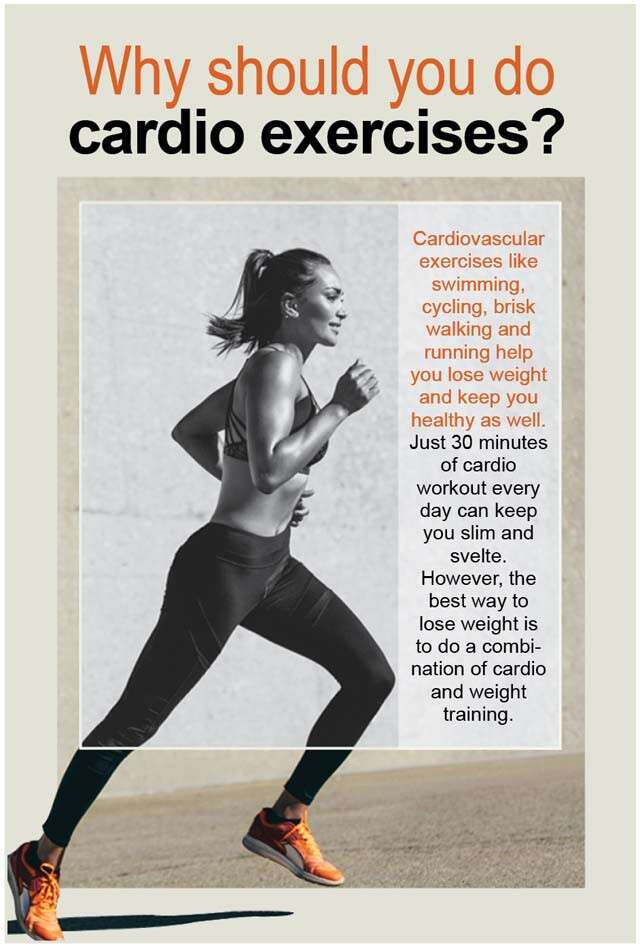
You can get in shape quickly by starting to exercise. There are many ways to do this. While exercise is obviously one of the most important things you can do, there are other factors you should be aware of. It is important to eat a healthy and balanced diet. Additionally to eating a varied diet, it is important that you engage in strength-training exercises and cardio exercise. However, before starting a new fitness routine, you should consult your doctor for any necessary modifications to your diet and lifestyle.
While common height-weight charts might not be accurate, there is another way to estimate your ideal body weight. The body fat tests are a way to find your ideal weight. You can then plan your exercise programs accordingly. This kind of testing will give you an idea of how long it will take to burn fat. You'll be able set realistic goals and stick with them.

For beginners, it is important to focus on doing the right kind and amount of exercise. Make exercise a daily part of your day to get the best results. Consider joining a gym or taking classes in physical education. Equipment that keeps you fit and motivated is a good investment if you are too lazy or can't find time to exercise. There are inexpensive exercise balls, dumbbells, elastic bands, and tourniquets that can be purchased at any sporting goods store.
A gym membership is another option to help you get in shape quickly. Although there are many gyms around, they close for winter. You won't be able to exercise at a gym if your membership has expired. You can also buy basic gym equipment or use household products. A few fitness trainers have even made their own training videos. It is important to incorporate more exercise into your daily schedule, in addition to eating a healthy diet.
High-intensity interval training can be a quick way to lose weight. It involves alternating intense exercises with short rests. Although there are many options, this is the most efficient. Finding a workout that you enjoy is the key. You can even go to a spinning room or use a treadmill for maximum effect. It's all about finding the right balance in your exercise routine.

Start a fitness routine even if you don't have the best stamina. You'll need to be disciplined to make the most of this period. It is not unusual for people to plateau during exercise and then plateau after a few months. Despite the high-intensity exercises, you need to know what you're eating. To achieve the best results, you should exercise at least 150 times per week.
FAQ
What is the problem with BMI?
BMI is the acronym for Body Mass Index. It measures body fat based upon height and weight. This formula calculates BMI.
Weight in kilograms divided with height in meters.
The result is expressed as a number from 0 to 25. A score of 18.5+ indicates that you are overweight. A score higher than 23 indicates that you are obese.
A person who is 100 kg in weight and 1.75m in height will have a 22 BMI.
How can I lower my blood pressure
The first thing you need to do is find out what causes high blood pressure. Next, you must determine the cause and take steps to decrease it. These could include taking medication, eating less salt and losing weight.
Make sure you're getting enough exercise. You can also walk if you don’t have the time.
Consider joining a gym if your current exercise regimen is not satisfying you. A gym that has other members who are motivated by your goals will be a good choice. It's easier for you to exercise if you know that someone will be watching you at the club.
How to measure your body fat
A Body Fat Analyzer can be used to measure body fat. These devices are used for measuring the percentage of body fat in people who want to lose weight.
How can I get enough vitamins?
The majority of your daily needs can be met through diet alone. Supplements can be helpful if you are lacking in any one vitamin. A multivitamin supplement can provide all the vitamins you require. You can also buy individual vitamins at your local pharmacy.
Talk to your doctor if there are any concerns about getting enough nutrients. For example, dark green leafy vegetables such as spinach, broccoli, kale, collard greens, turnip greens, mustard greens, bok choy, romaine lettuce, arugula, and Swiss chard are rich in vitamins K and E. Other good sources include oranges, tomatoes, strawberries, cantaloupe, carrots, sweet potatoes, pumpkin, and squash.
Ask your doctor if there is any doubt about how much vitamin you should be taking. Based on your medical history and your current health, your doctor can recommend the correct dosage.
Which lifestyle is best for your health?
Living a healthy lifestyle is one that encourages you to eat well, exercise regularly, get enough sleep, and avoids stress. This will ensure that you live a long healthy life.
Small changes to your diet or exercise routine can help you start losing weight. If you're looking to lose weight, walk for 30 minutes each morning. For more activity, you can try swimming or dancing. You could also sign up to an online fitness platform like Strava, which tracks your activity.
How do I know what's good for me?
Your body is your best friend. Your body knows best when it comes to how much exercise, food, and rest you need. You need to be aware of your body and not overdo it. Pay attention to your body, and ensure that you are doing all you can to keep yourself healthy.
Statistics
- WHO recommends reducing saturated fats to less than 10% of total energy intake; reducing trans-fats to less than 1% of total energy intake; and replacing both saturated fats and trans-fats to unsaturated fats. (who.int)
- WHO recommends consuming less than 5% of total energy intake for additional health benefits. (who.int)
- According to the 2020 Dietary Guidelines for Americans, a balanced diet high in fruits and vegetables, lean protein, low-fat dairy and whole grains is needed for optimal energy. (mayoclinichealthsystem.org)
- nutrients.[17]X Research sourceWhole grains to try include: 100% whole wheat pasta and bread, brown rice, whole grain oats, farro, millet, quinoa, and barley. (wikihow.com)
External Links
How To
What does "vitamin" actually mean?
Vitamins are organic compounds that can be found in foods. Vitamins aid us in absorbing nutrients from the food we eat. The body cannot make vitamins; therefore, they must be obtained from food.
There are two types vitamins: water soluble or fat soluble. Water soluble vitamins dissolve easily in water. Vitamin C,B1(thiamine), B2 (2riboflavin), and B3 (3niacin), as well as vitamin C,B1, B2 (riboflavin), and B3 (niacin), vitamin B6 (pyridoxine), vitamin folic acid (biotin), pantothenic, and choline are examples. The liver and fat soluble vitamins are stored within the liver and in fatty tissue. You can find vitamin D, E K, A, beta carotene, and other fat-soluble vitamins.
Vitamins can be classified by their biological activity. There are eight major groups of vitamins:
-
A - Vital for normal growth and maintaining good health.
-
C – essential for proper nerve function.
-
D - essential for healthy bones, teeth, and gums.
-
E - Required for good vision & reproduction
-
K - Required for healthy nerves and muscles.
-
P - Vital for strong bones and teeth.
-
Q - aids digestion, absorption and absorption iron
-
R - necessary for making red blood cells.
The recommended daily allowance (RDA), for vitamins, varies depending upon age, gender, or physical condition. The U.S. Food and Drug Administration sets RDA values.
For adults 19 years and over, the RDA of vitamin A is 400mg per day. For fetal development, pregnant women need 600 mg per day. Children ages 1-8 require 900 micrograms per day. For infants younger than one year, 700 micrograms are required daily. However, this number drops to 500 micrograms each day for children aged 9-12 months.
Children aged between 1-18 years require 800 micrograms of sugar per day, while overweight children need 1000 micrograms. Children who are underweight receive 1200 micrograms every day to meet their nutritional requirements.
Children aged 4-8 years old who have been diagnosed as having anemia require 2200 micrograms of vitamin C per day.
2000 micrograms daily is required for adults over 50 to maintain their general health. Because of their higher nutrient needs, women who are pregnant or nursing need 3000 mg per day.
Adults over 70 years of age need 1500 micrograms per day since they lose about 10% of their muscle mass each decade.
Women who are pregnant or lactating need more than the RDA. Pregnant women require 4000 micrograms daily during pregnancy, and 2500 micrograms every day after birth. Breastfeeding mothers need 5000 micrograms per day when breast milk is being produced.